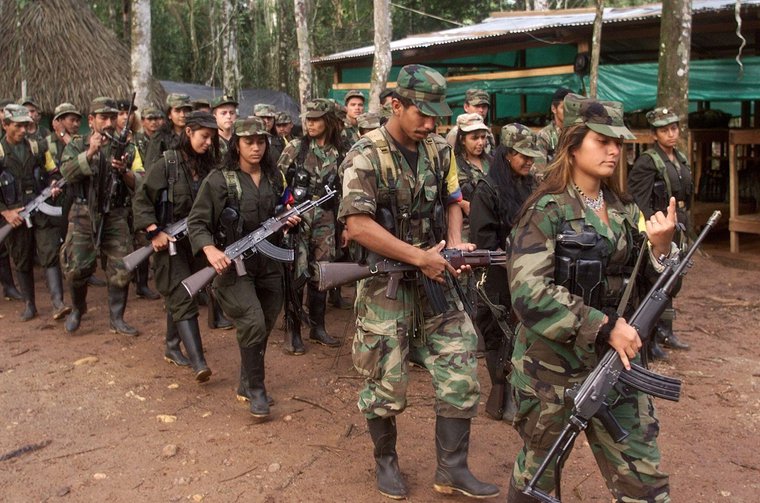We started by filing an amicus (friend of the court) brief in 2016 in a criminal case against ‘Karina’, the alias of a former commander of the FARC’s 47th Front. Our goal was that the forced abortions endured by women under her command be taken into account by the criminal process. Thanks to this intervention, a court recognised a few weeks ago that, within FARC, compulsory contraception and forced abortions were systematic and widespread, and a form of gender-based violence.
With this experience under our belt, we met and began to represent Helena*, a victim of FARC’s reproductive violence. Helena was forcibly recruited at the age of 14 and subsequently forced to take contraceptives and have an abortion. Her case is emblematic because it mirrors the lived experiences of many peasant women and girls illegally recruited by armed groups during the civil war.
Helena left the ranks of the FARC as an adult. For this reason, the authorities initially refused to recognise her as a victim, despite the fact that she had been recruited as a child. Her story inspired us to think outside the box and use the judicial system to prevent the legal exclusion of women like her. To make matters even more difficult, it was also unclear whether international humanitarian law protected former combatants, as it focuses primarily on the effects of armed conflict on civilians.
A historic win
After going to several judges, Helena’s case finally reached the Constitutional Court. In 2019 we got a historic win, with a ruling that recognised her as a victim of the armed conflict, who should be compensated. It meant a lot to her – it was the first time that a judicial authority had believed her – and it was a very unusual outcome for victims of reproductive violence.
This ruling was commended in international legal circles as one of the few to protect victims of gender-based violence within armed groups, and has been useful for other local organisations defending people like Helena.
We also saw an opportunity to fight for victims of reproductive violence in the transitional justice system created by the peace agreement, which included judicial mechanisms, such as the Special Jurisdiction for Peace (JEP), and extrajudicial mechanisms, such as the Truth Commission.
We introduced the first and only report on reproductive violence to the JEP, and Helena was recognised as a victim in the JEP’s case 007, on the recruitment and use of children in the armed conflict. As a result of our earlier work, the JEP accepted that it should investigate gender-based violence within this case, including forced abortion, forced contraception and “other conduct related to attacks on sexual and reproductive integrity”.
We also presented a report called ‘A Violence Without Name: Reproductive Violence in the Colombian Armed Conflict’ to the CEV. It included Helena's story as a model case and an example of how this kind of violence was perpetrated by guerrillas and paramilitaries.
On 15 July, the JEP agreed to open Case 011, on sexual violence, reproductive violence and other crimes based on discrimination, prejudice and hatred due to gender, sex, identity and sexual orientation. This had been repeatedly requested by members of the Five Keys Alliance that Women’s Link established along with the civil society groups Sisma Mujer, Corporación Humanas, Colombia Diversa and Red Nacional de Mujeres.
This journey continues to bear fruit. The Truth Commission suggested that authorities amend the Law 1448 of 2011, known as the Victims’ Law, to include people like Helena, who endured this kind of violence, and to strengthen the healthcare system to address the specific and disproportionate impacts of sexual and reproductive violence on survivors.
Acknowledging this violence is relevant for proper reparations. A woman who endured a forced abortion in unsafe conditions, for example, may require special healthcare.
These steps in the right direction encourage us to continue fighting to make reproductive violence visible and legally accountable, and to ensure that victims are helped and compensated. Regardless of the context, the reproductive autonomy of all women must be respected.
*Name changed to protect the identity of the woman.



Comments
We encourage anyone to comment, please consult the oD commenting guidelines if you have any questions.